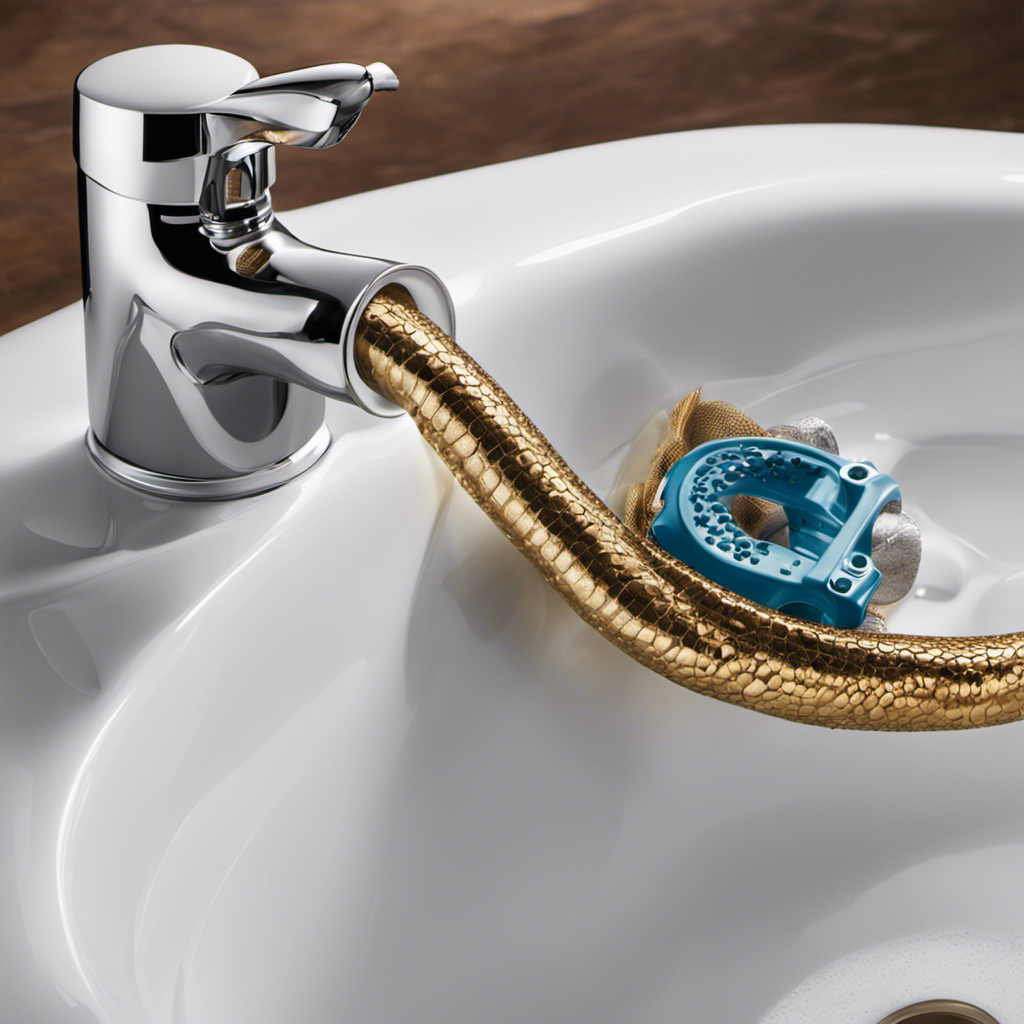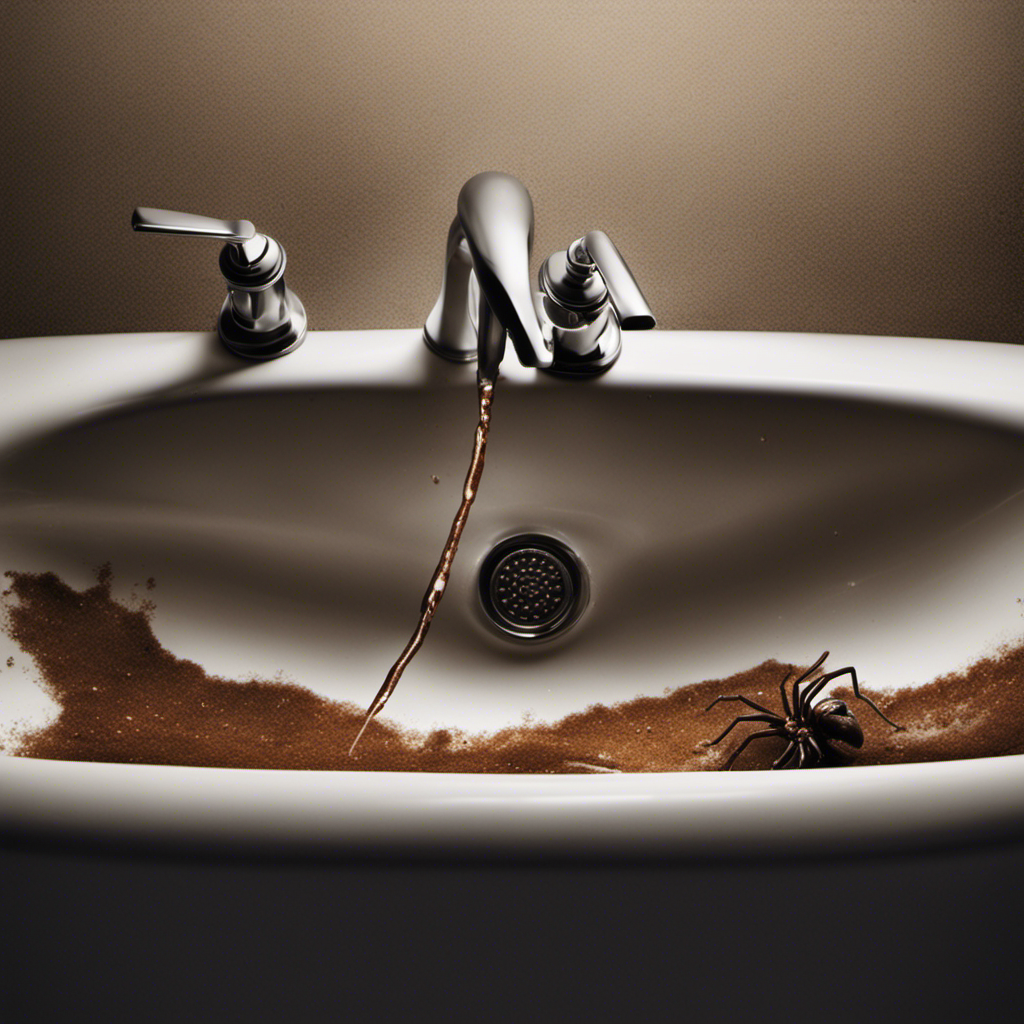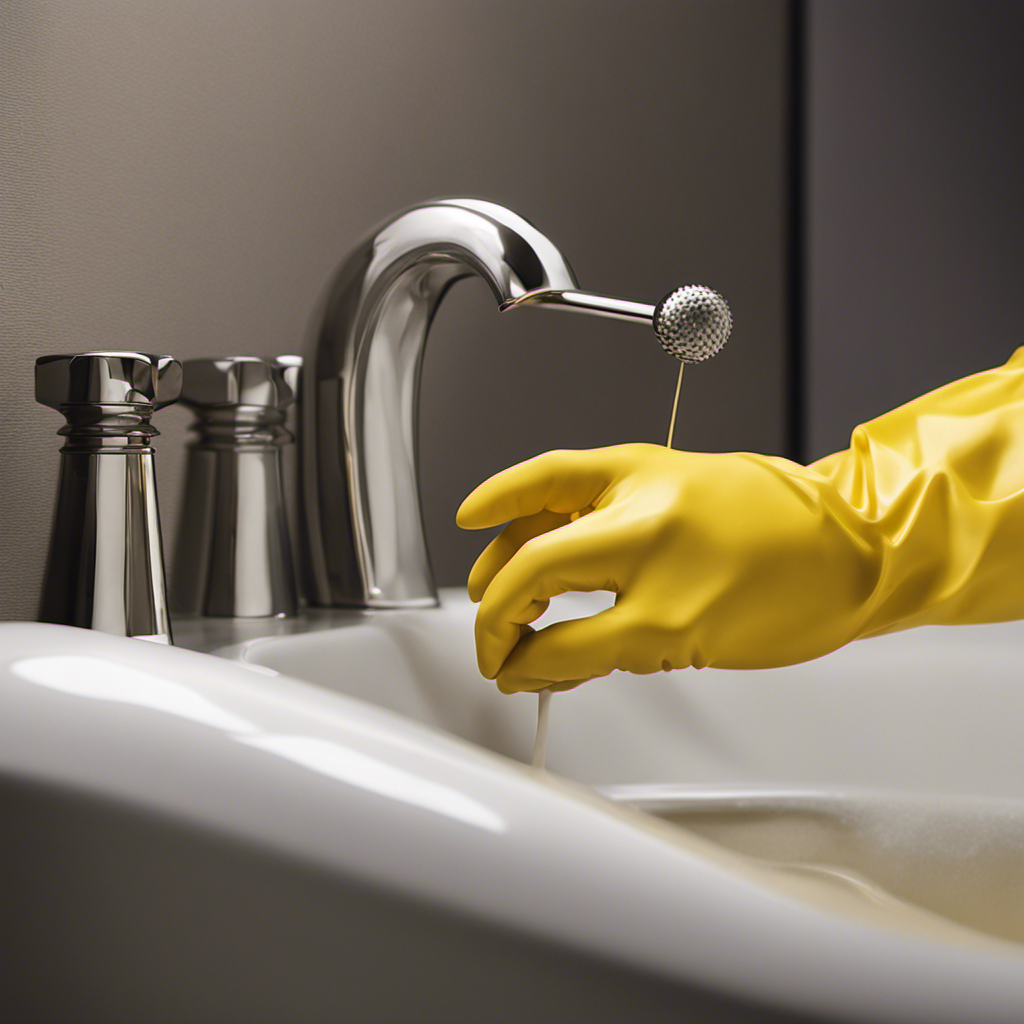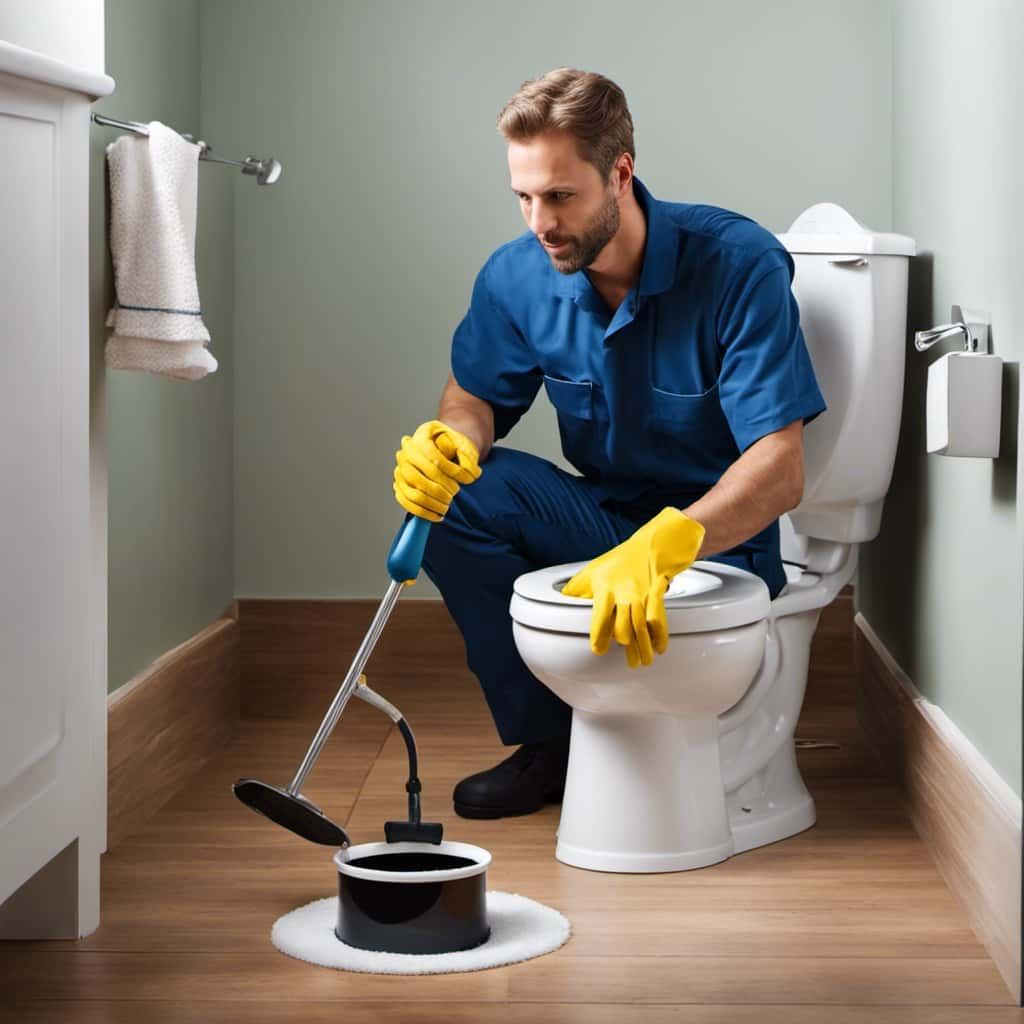Are you tired of standing in ankle-deep water every time you take a shower? Look no further! In this article, we will guide you through the step-by-step process of unclogging your bathtub drain.
From understanding the causes of clogs to effective chemical-free methods, you’ll learn everything you need to know to keep your drain clear and flowing smoothly.
Say goodbye to pesky clogs and hello to a blissful shower experience!
Key Takeaways
- Accumulation of hair and soap scum is a common cause of bathtub drain clogs.
- Objects accidentally dropped into the drain can also lead to clogs.
- Regular maintenance and prevention methods can help avoid future clogs.
- DIY methods like using a plunger, drain snake, or chemical-free solutions can often unclog a bathtub drain, but professional help may be needed if these methods don’t work.
Understanding the Causes of Bathtub Drain Clogs
Understanding the causes of bathtub drain clogs can help you prevent future issues. By identifying the common drain issues that lead to clogs, you can take proactive steps to maintain a clear and functioning drain.
One of the main causes of clogs is the accumulation of hair in the drain. As you shower or bathe, loose hair can easily go down the drain and eventually create a blockage.
Another common cause is the buildup of soap scum and residue. Over time, these substances can solidify and restrict the flow of water.
Additionally, objects such as small toys or jewelry accidentally dropped into the drain can cause clogs.
Tools and Materials Needed to Unclog a Bathtub Drain
Grab the plunger and a bucket to start tackling that clogged bathtub drain. Here are four essential tools and materials you’ll need to unclog your drain:
-
Plunger: One of the most common mistakes in bathtub drain unclogging is using the wrong plunger. Make sure to use a cup-style plunger specifically designed for sinks and tubs.
-
Drain snake: A drain snake is a flexible tool that can reach deep into the drain to remove clogs caused by hair and debris. It’s an effective DIY method, but if you’re not comfortable using it, consider hiring a professional.
-
Hot water: Before attempting any DIY method, pour a bucket of hot water down the drain to help loosen the clog.
-
Drain cleaner: While there are many DIY drain cleaning solutions available, it’s important to be cautious. Improper use of drain cleaners can damage your pipes. If DIY methods don’t work, it’s best to contact a professional.
By having these tools and materials ready, you’ll be prepared to tackle your clogged bathtub drain.
In the next section, we will provide you with a step-by-step guide to removing hair and debris from the drain.
Step-By-Step Guide to Removing Hair and Debris From the Drain
To get started with removing hair and debris from the drain, first, make sure you have the necessary tools and materials. You will need a plunger, a pair of gloves, and a bucket.
Begin by putting on the gloves to protect your hands from any dirt or bacteria. Next, fill the bathtub with a few inches of water to create a seal around the plunger.
Place the plunger over the drain and push down firmly, then pull up quickly. Repeat this motion several times until you feel the clog start to loosen.
Once the clog is cleared, remove any remaining hair or debris from the drain using your gloved hand or a pair of tweezers. Regular drain cleaning is important to prevent future clogs, so make sure to clean your bathtub drain regularly.
Now, let’s move on to effective chemical-free methods to unclog a bathtub drain.
Effective Chemical-Free Methods to Unclog a Bathtub Drain
If you want to avoid using harsh chemicals to clear your bathtub drain, a simple and effective method is to use a mixture of baking soda and vinegar.
Here’s a step-by-step guide to help you unclog your drain using natural remedies:
-
Start by removing any visible hair or debris from the drain using a pair of gloves or tweezers.
-
Pour half a cup of baking soda down the drain, followed by one cup of vinegar.
-
Wait for about 15 minutes to allow the mixture to fizz and break down the clog.
-
Finally, flush the drain with hot water to wash away the loosened debris.
Preventing Future Clogs: Tips and Maintenance for a Clear Bathtub Drain
To keep your bathtub drain clear and prevent future clogs, regularly remove any visible hair or debris using gloves or tweezers. This simple step can go a long way in maintaining a clear and functioning drain. In addition to regular cleaning, there are also natural remedies that can help prevent clogs. One effective method is to pour boiling water down the drain once a week. This can help dissolve any buildup and keep the pipes clear. Another natural remedy is to mix equal parts baking soda and vinegar and pour it down the drain. Let it sit for 15 minutes, then flush it with hot water. This combination can help break down any residue and prevent clogs. By incorporating these regular cleaning practices and natural remedies, you can keep your bathtub drain clear and prevent future clogs.
| Regular Cleaning Practices | Natural Remedies |
|---|---|
| Remove visible hair or debris | Pour boiling water down the drain weekly |
| Mix equal parts baking soda and vinegar and pour it down the drain | |
| Let it sit for 15 minutes | |
| Flush with hot water |
Frequently Asked Questions
Can I Use the Same Methods to Unclog a Bathtub Drain as I Would Use for a Sink Drain?
Yes, you can use the same unclogging methods for a bathtub drain as you would for a sink drain. The tools needed include a plunger, drain snake, and possibly a chemical drain cleaner.
Is It Safe to Use a Plunger to Unclog a Bathtub Drain?
Is it safe to use a plunger to unclog your bathtub drain? Consider plunger alternatives like a drain snake or baking soda and vinegar. Using a plunger can cause potential risks such as damaging the pipes.
Are There Any Natural Remedies I Can Use to Unclog a Bathtub Drain?
To naturally unclog a bathtub drain, you can try using a mixture of baking soda and vinegar. Pour the baking soda down the drain, followed by the vinegar. Let it sit for a few minutes, then flush with hot water. Regularly maintain a clean bathtub drain by using a drain strainer to catch hair and debris.
Can a Clogged Bathtub Drain Cause Damage to My Plumbing System?
A clogged bathtub drain can lead to more serious plumbing issues if left untreated. It’s important to address the clog promptly to avoid potential damage. For severe clogs, it may be necessary to hire a professional plumber.
How Often Should I Clean My Bathtub Drain to Prevent Future Clogs?
To prevent future clogs, it’s important to clean your bathtub drain regularly. Experts recommend cleaning it every few months or whenever you notice slow drainage. Here are some preventative measures to avoid clogs.
Conclusion
In conclusion, unclogging a bathtub drain is a simple task that can be easily mastered. By understanding the causes of clogs and having the right tools and materials on hand, you can quickly remove hair and debris from the drain.
Whether using chemical-free methods or preventative maintenance, keeping your bathtub drain clear and flowing smoothly is essential.
So grab your plunger, snake, or vinegar and get ready to say goodbye to clogs. Your clean and clear bathtub drain awaits!










